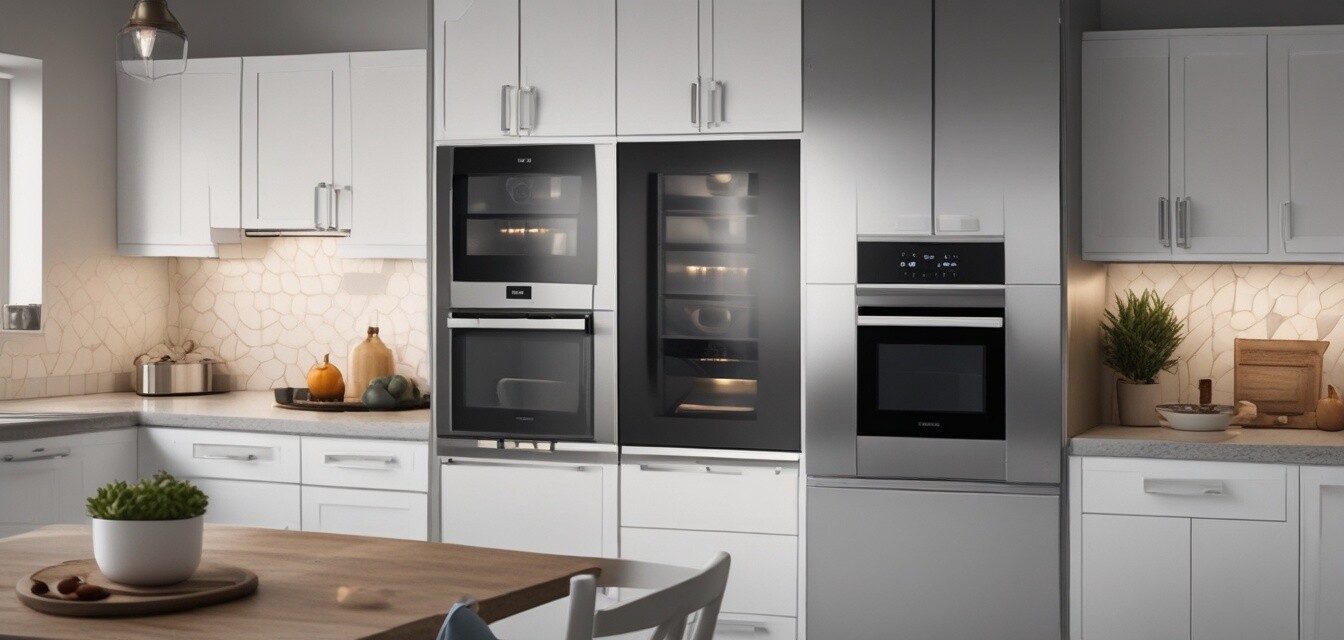
How IoT is shaping the future of kitchen appliances
Key Takeaways
- The Internet of Things (IoT) enhances the functionality of kitchen appliances, making them smarter and more efficient.
- Smart kitchen tools are becoming the norm, offering remote control and automation capabilities.
- Energy efficiency is significantly improved through IoT-enabled devices.
- Emerging trends indicate a focus on seamless user experiences and eco-friendly innovations.
The Internet of Things (IoT) is revolutionizing the world of kitchen appliances. With each passing day, the integration of technology in our kitchens becomes more seamless, allowing for unprecedented convenience and efficiency. This article will explore how IoT is shaping the future of kitchen tools, from intelligent cooktops to smart ovens and touchless faucets.
Understanding IoT in Kitchen Appliances
The Internet of Things refers to the interconnected network of devices embedded with sensors and software that allow them to exchange data. In the realm of kitchen appliances, this means that devices can communicate with each other and users, providing enhanced control and efficiency.
Key components of IoT-enabled kitchen appliances
| Component | Description |
|---|---|
| Sensors | These collect data regarding the operational status of appliances, such as temperature and energy usage. |
| Connectivity | Wi-Fi or Bluetooth capabilities enable appliances to connect to the internet for remote access. |
| Smart Interfaces | Touchscreens and voice assistants that allow users to interact more intuitively with their appliances. |
| Data Analytics | Analyzes data collected over time to suggest improvements in cooking habits and energy use. |
Impact of IoT on Kitchen Efficiency
As technology advances, the impact of IoT on our kitchens is becoming increasingly apparent. Here are several ways IoT is enhancing kitchen efficiency:
- Remote Monitoring: Users can control appliances from their smartphones, making cooking significantly more convenient.
- Energy Management: IoT appliances can optimize energy consumption, reducing utility bills and environmental impact.
- Smart Scheduling: Appliances can be set to operate during off-peak hours or when energy prices are lower.
- Automated Cooking: Some appliances can automatically adjust cook times and temperatures based on preset recipes or user preferences.
Popular IoT Kitchen Appliances
Modern kitchens are witnessing a wave of innovative appliances that harness the power of IoT:
| Appliance Type | Features | Benefits |
|---|---|---|
| Smart Ovens | Wi-Fi connectivity, app control, voice assistance | Convenience of remote cooking adjustments |
| Intelligent Cooktops | Smart sensors, precise heat control, automated cooking guides | Consistent cooking results |
| Smart Refrigerators | Inventory tracking, temperature monitoring, recipe suggestions | Reduces food waste and enhances meal planning |
| Touchless Faucets | Motion activation, adjustable water flow | Improved hygiene and water conservation |
Challenges in Implementing IoT in Kitchens
While the advantages of IoT in the kitchen are substantial, several challenges also exist:
- Security Concerns: With the rise in connected devices comes the risk of data breaches and hacking.
- Compatibility Issues: Devices from different manufacturers may not integrate seamlessly.
- Cost of Technology: Initial investment in smart appliances can be high, potentially deterring consumers.
Pros
- Enhanced convenience and efficiency
- Remote access for better control
- Energy-saving options
- Automation leads to time-saving cooking
Cons
- Higher upfront costs
- Dependence on internet connectivity
- Privacy and security risks
- Potential for compatibility issues
Future Trends in Smart Kitchen Technology
The evolution of kitchen appliances through IoT is only getting started. Here are some trends worth noting:
- AI Integration: Future kitchen appliances are likely to incorporate artificial intelligence, learning users' habits for customized experiences.
- Voice Activation: Voice control will keep advancing, offering hands-free operation for a seamless cooking experience.
- Eco-Friendly Options: The focus on sustainability will enhance energy-efficient products and eco-conscious materials.
- Interconnected Devices: The future will see even more devices working together, creating a fully-integrated smart kitchen ecosystem.
Conclusion
The impact of the Internet of Things on kitchen appliances is profound, reshaping how we cook, manage energy, and interact with our kitchen environments. With continued advancements and innovations, the future of kitchen technology will undoubtedly offer even greater convenience and efficiency. To stay updated, check out our Kitchen Technology News for more insights into emerging trends!
Tips for Embracing IoT in Your Kitchen
- Start with basic smart appliances like a smart plug or lighting.
- Ensure strong home Wi-Fi connectivity for seamless operation.
- Read user reviews to select compatible devices.
- Stay informed about new updates and features through product websites.